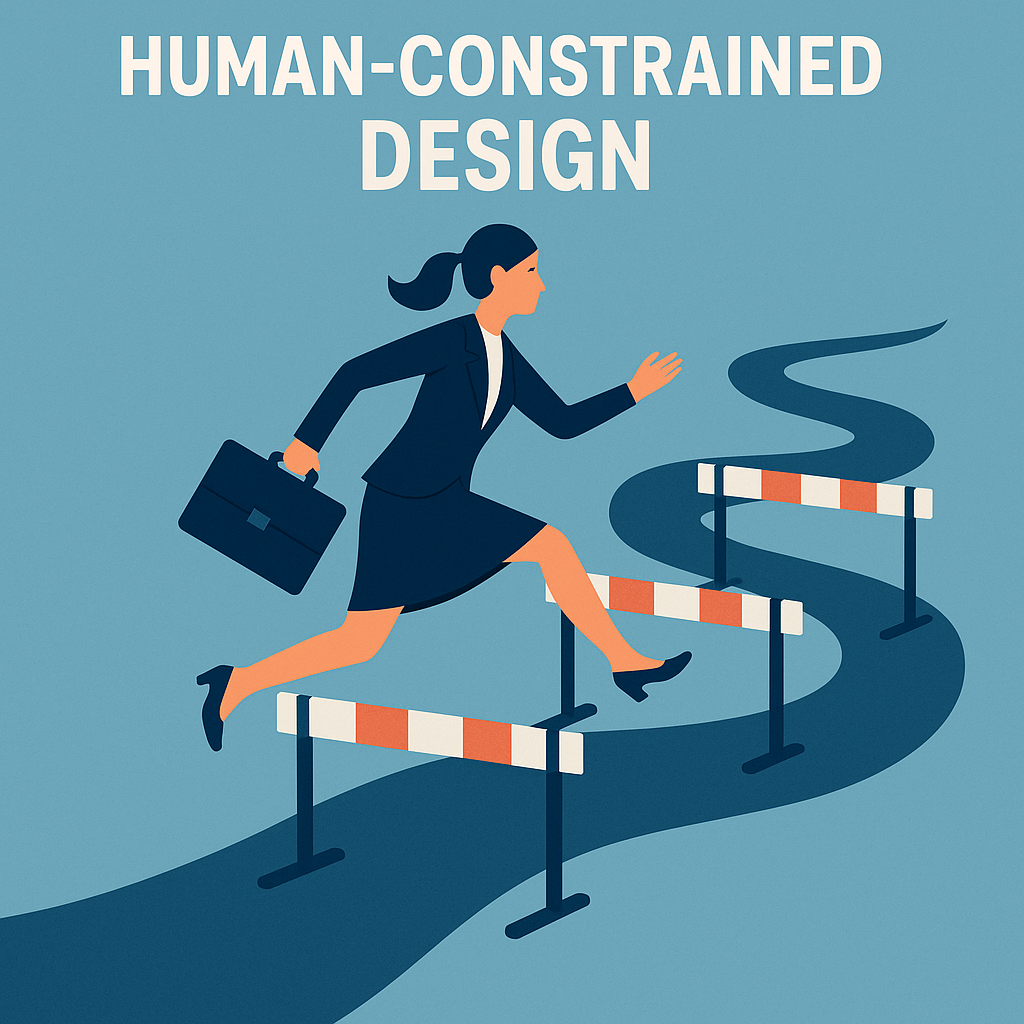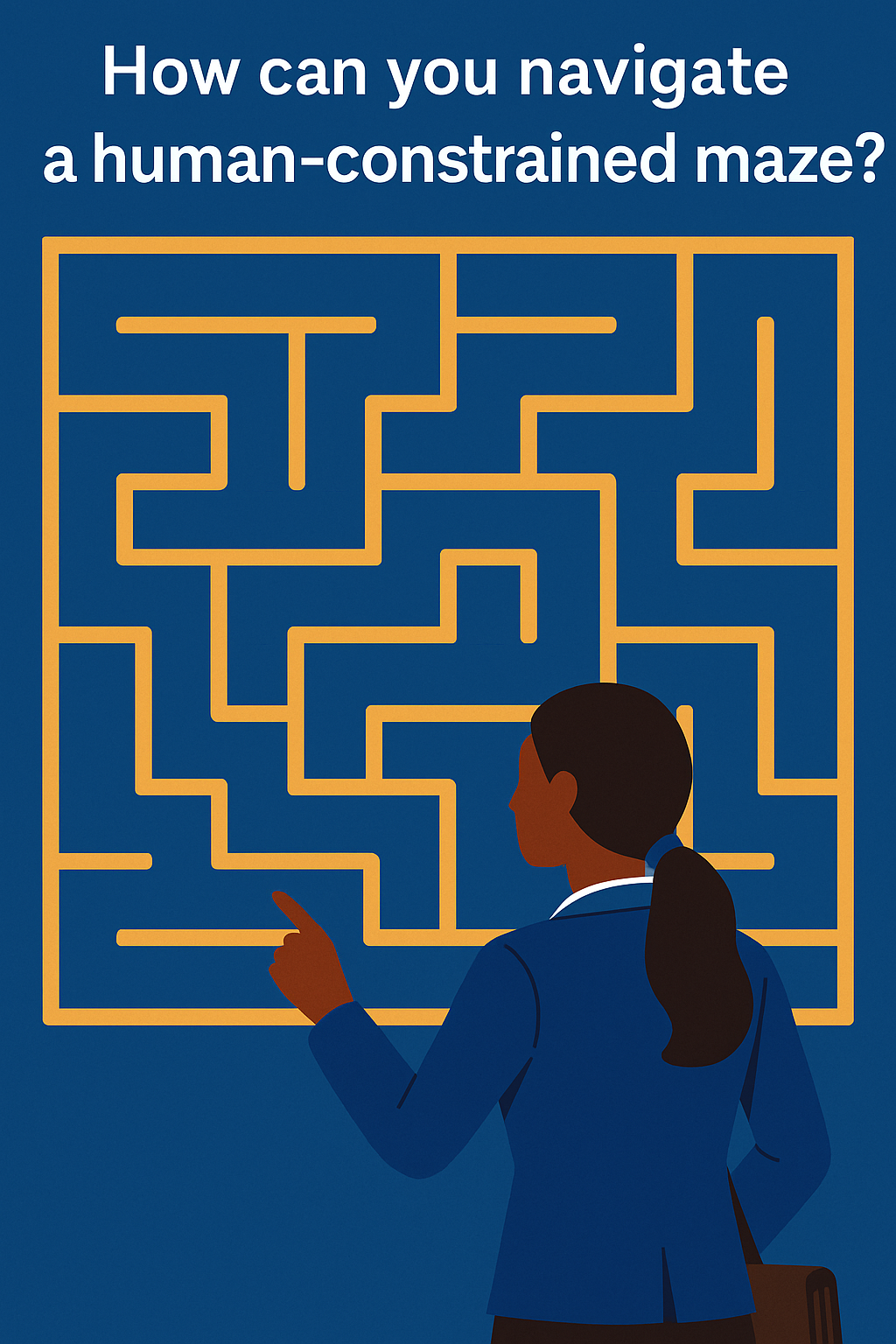Constraints Are a Feature Not a Flaw: Designing with Real-World Limits in Mind
What if your biggest product breakthrough is hiding behind the exact constraints you're trying to work around?
What Is It?
Across energy tech, payments, and live event operations, I’ve learned a simple truth: users operate in constraints, not ideal conditions. Time pressure, legacy systems, compliance friction that’s the real world.
Constraint-Centered Design is about solving within those limits. It's how I help teams surface trapped value by turning blockers into blueprints.
Visualize before you optimize. Index cards before Lucidcharts. Lucidcharts before Jira. Conversations before specs. Context before code.
What Does It Do for Teams Like Yours?
- ✅ Reduce rework by focusing where users already experience friction.
- ✅ Drive adoption by designing around actual constraints.
- ✅ Build trust by solving problems users already anticipate.
These principles kept projects moving at Planet Payment, Sol Systems, and Madison Square Garden. And they work whether you're launching software or streamlining workflows.

🧠 When the Problem Isn’t the Feature It’s the Context
Case: VAT Refund System for Planet Payment
Problem: Refunds were eligible but failing support tickets were climbing.
Root Cause: Compliance rules weren’t translated into backend logic or the UX flow.
- Mapped policy to testable logic rules
- Co-reviewed edge cases with backend engineers
- Prototyped flow and tested with support teams
Result:
- ✅ 30% reduction in refund errors
- ✅ Fewer chargebacks
- ✅ Alignment between support, product, and engineering

🛠 Dashboards Built for Time-Pressed Teams
Case: Sol Systems Renewable Energy Calculator
We needed to help users estimate fossil fuel usage fast. Initial plans leaned heavily on backend API logic until we saw users were frustrated by the lift of authenitcating their utility accounts so actual values could be scraped.
- Prototyped a visual calculator before backend integration
- Prioritized clarity over absolute precision
- Validated flows in live sessions with engineering + UX
Result:
- ✅ 200+ signups in the first month
- ✅ Improved activation through trust-based UX
- ✅ Unblocked sprints without sacrificing design intent
🎯 Design that Keeps Pace with Delivery
Case: MSG Arena Suite Platform
POS systems. Multiple vendors. And thousands of suite guests. We couldn’t afford the typical “handoff and hope” process.
- Mapped journey flows during dev grooming
- Embedded UI references inside Jira tickets
- Kept designers involved through QA
Results:
- ✅ Reduced QA time by 25%
- ✅ Fewer revisions, faster frontend output
- ✅ Stakeholder confidence throughout delivery

🚦 Embedded Support That Works When People Need It
Support shouldn’t live in a PDF no one opens. I integrate help directly where users work.
- Tutorials embedded in-app
- Loom videos tied to specific screens
- Inline guidance no tab switching required
Outcomes:
- ✅ Faster onboarding
- ✅ Lower support volume
- ✅ Users feel confident, not lost
🧰 Tools I Use to Deliver Under Constraints
- Index Cards – For sketching early ideas away from screens and distractions
- Lucidchart – For mapping flows and surfacing dependencies
- Figma – For low- and high-fidelity prototypes
- Jira – For linking specs to sprint delivery
- Loom / Camtasia – For stakeholder walk-throughs and internal training
- Confluence – To document what matters (with just enough detail)
I build systems that think like the people who use them.
🔑 Key Takeaways
- 🟢 Constraints are signals, not obstacles
- 🟢 Good design starts with the truth of the environment
- 🟢 Delivery doesn’t end at launch it ends at adoption

Ready to Build Systems That Get Used, Not Just Shipped?
If your dashboards are ignored, your support docs unread, or your workflows propped up by workaround heroes, let’s fix that.
Constraint-Centered Design gives your product a fighting chance by designing with real users in mind, not hypotheticals.